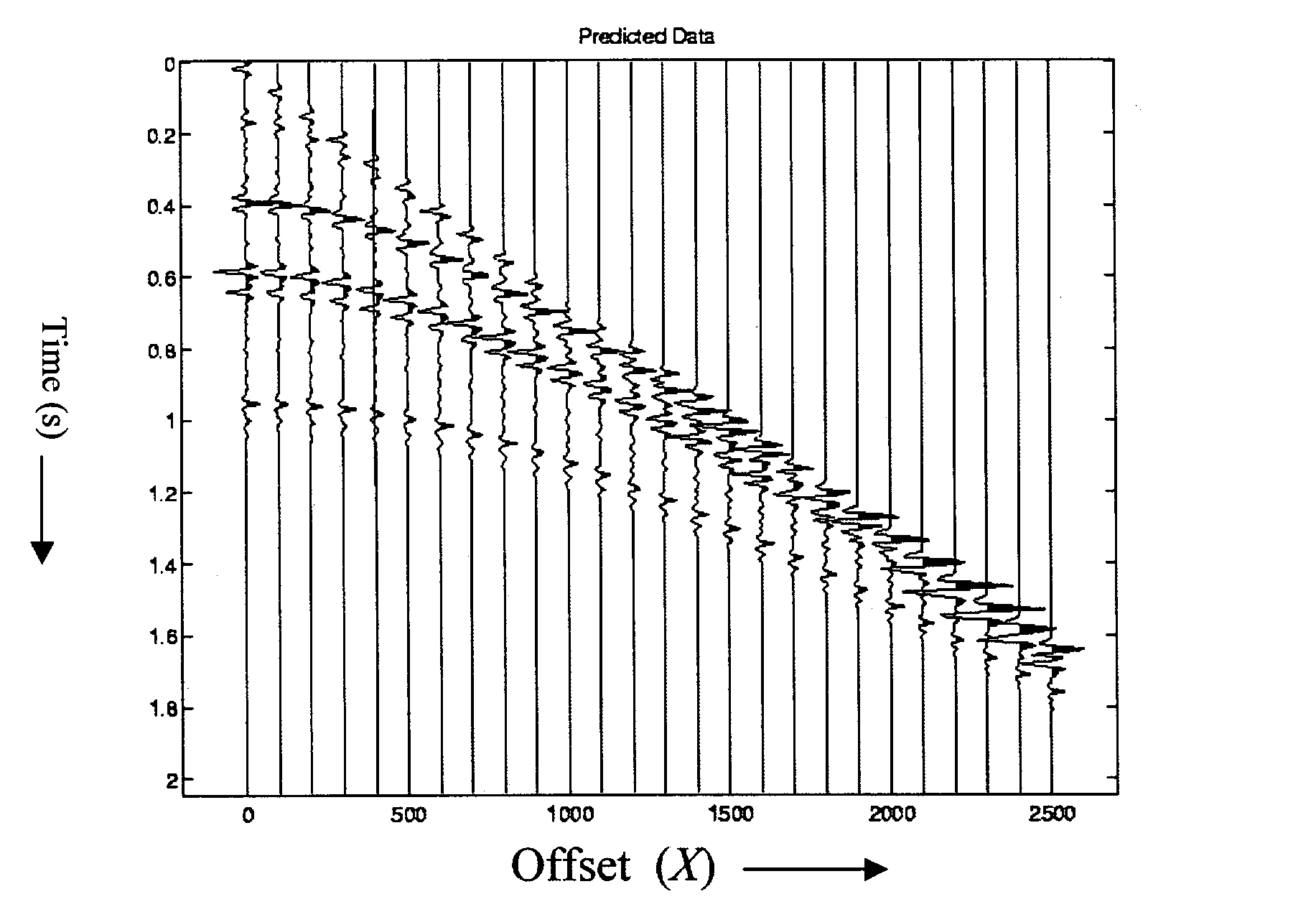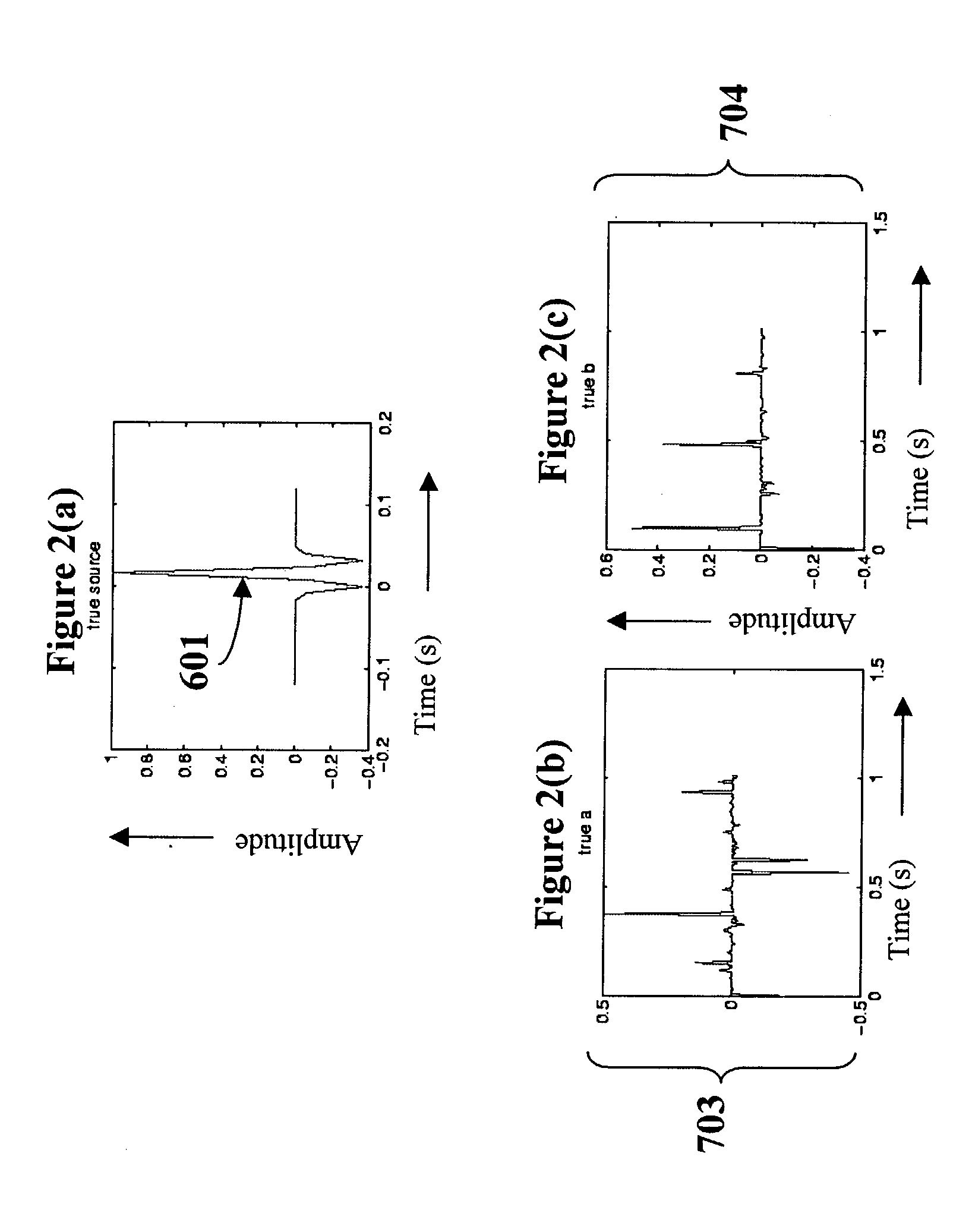Simultaneous inversion for source wavelet and AVO parameters from prestack seismic data
a source wavelet and seismic data technology, applied in the field of seismic data simultaneous inversion of source wavelet, can solve the problems of difficult to measure effective source wavelet in practice, difficult to see b>2/b> reservoirs, and large noise level, and achieve good resolution, high frequency content, and improved inversion robustness
- Summary
- Abstract
- Description
- Claims
- Application Information
AI Technical Summary
Benefits of technology
Problems solved by technology
Method used
Image
Examples
Embodiment Construction
[0039]The present invention provides a method and system to invert prestack seismic data to simultaneously recover a source wavelet and reflectivity parameters, including AVO parameters. The method utilizes the non-parallel moveout of a plurality of reflectors in prestack data to obtain estimates of source and reflectivity parameters simultaneously. Appropriately mixed norms for the source wavelet and the reflectivity parameters improve the robustness of the inversion. The method accommodates amplitude variation with offset, which means that AVO parameters can be determined from the inversion. Physically realizable parameters constrain the source wavelet and reflectivity parameters in the inversion process. Other advantages of the invention will be readily apparent to persons skilled in the art based on the following detailed description. To the extent that the following detailed description is specific to a particular embodiment or a particular use of the invention, this is intende...
PUM
 Login to View More
Login to View More Abstract
Description
Claims
Application Information
 Login to View More
Login to View More - R&D
- Intellectual Property
- Life Sciences
- Materials
- Tech Scout
- Unparalleled Data Quality
- Higher Quality Content
- 60% Fewer Hallucinations
Browse by: Latest US Patents, China's latest patents, Technical Efficacy Thesaurus, Application Domain, Technology Topic, Popular Technical Reports.
© 2025 PatSnap. All rights reserved.Legal|Privacy policy|Modern Slavery Act Transparency Statement|Sitemap|About US| Contact US: help@patsnap.com



